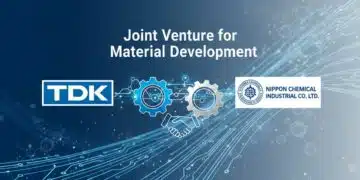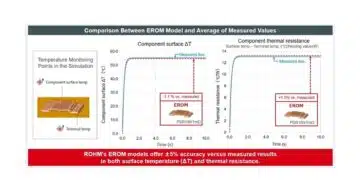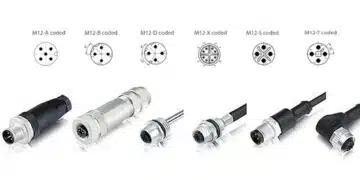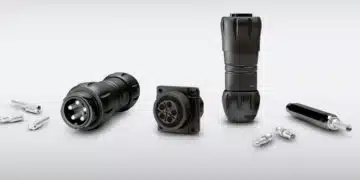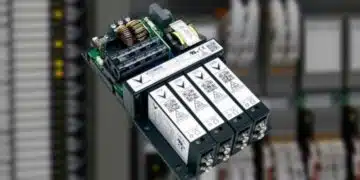Bourns introduces new semi-shielded power inductor series with polarity control for optimized EMI suppression. New automotive grade, AEC-Q200 compliant SRN5040TA-P Series meets stringent temperature and reliability requirements for advanced automotive systems
Bourns, Inc., a leading manufacturer and supplier of electronic components for power, protection, and sensing solutions, announced its SRN5040TA-P Series of Semi-Shielded Power Inductors.
The new series features polarity control that optimizes Electromagnetic Interference (EMI) protection for a wide range of automotive systems.
These automotive grade, AEC-Q200 compliant semi-shielded power inductors provide excellent power management performance and thermal stability, meeting the demanding temperature and reliability requirements of advanced systems, including DC-DC converters, power supplies, driver assistance, infotainment and lighting systems.
The new SRN5040TA-P semi-shielded power inductors feature a specialized construction that minimizes magnetic field radiation while delivering high heating current and saturation current capabilities.
In addition, the series supports a wide operating temperature range of -55 °C to +125 °C, making it ideal for space-constrained automotive applications. The semi-shielded design utilizes a magnetic-epoxy coating around the winding perimeter, providing effective EMI suppression and lower magnetic field radiation compared to non-shielded inductors.
The Bourns® SRN5040TA-P Series is available now through Bourns’ authorized distribution partners. It is RoHS compliant and halogen free.
Features
- Semi-shielded construction
- Polarity control for EMI optimization
- High current
- AEC-Q200 compliant
- RoHS compliant and halogen free
Applications
- DC/DC converters
- Power supplies
- Automotive systems



